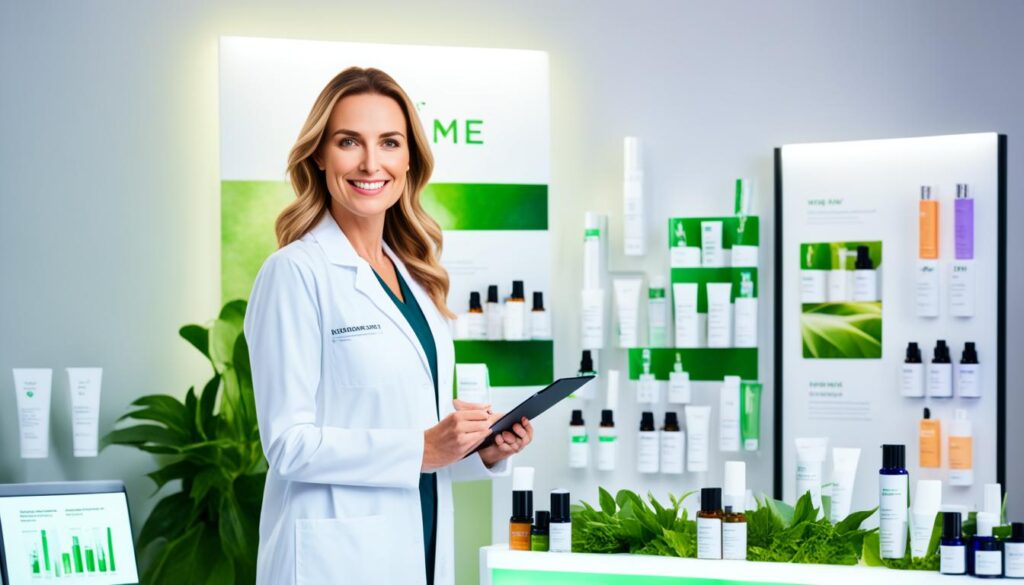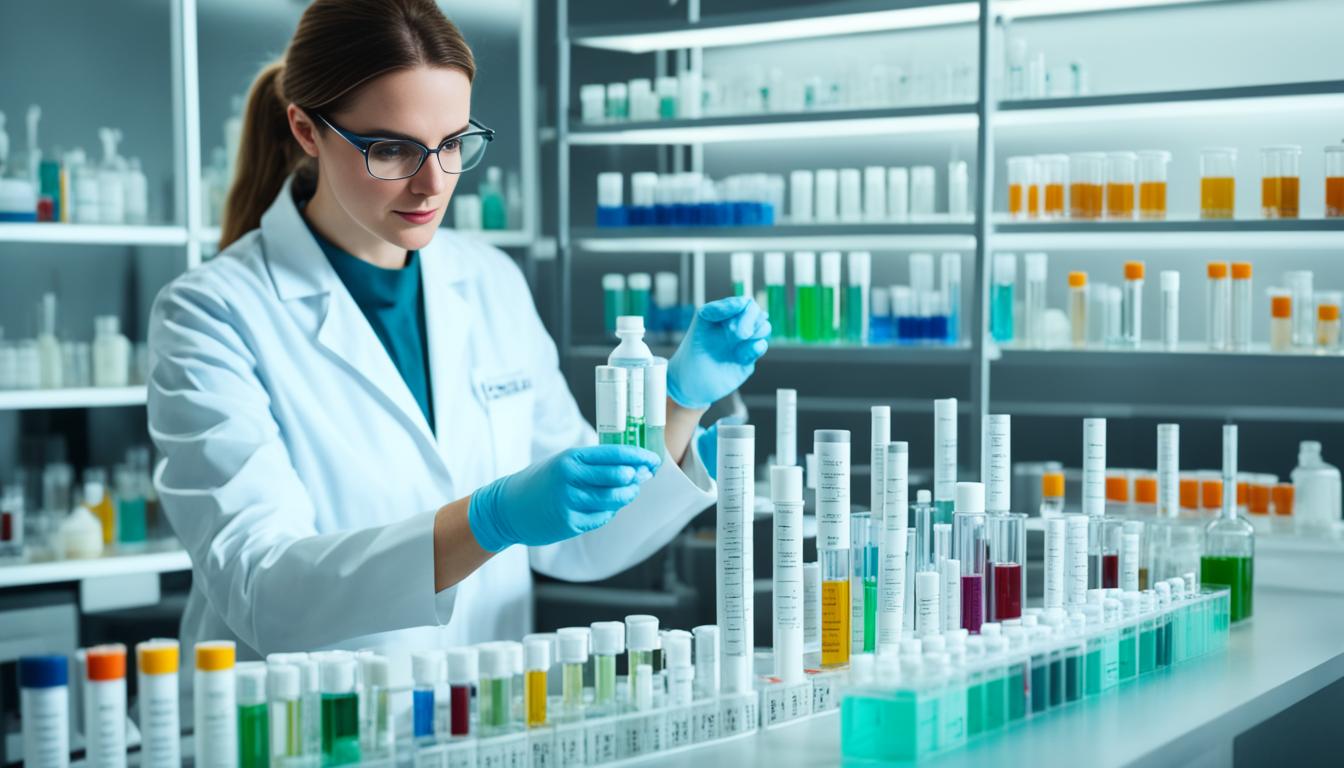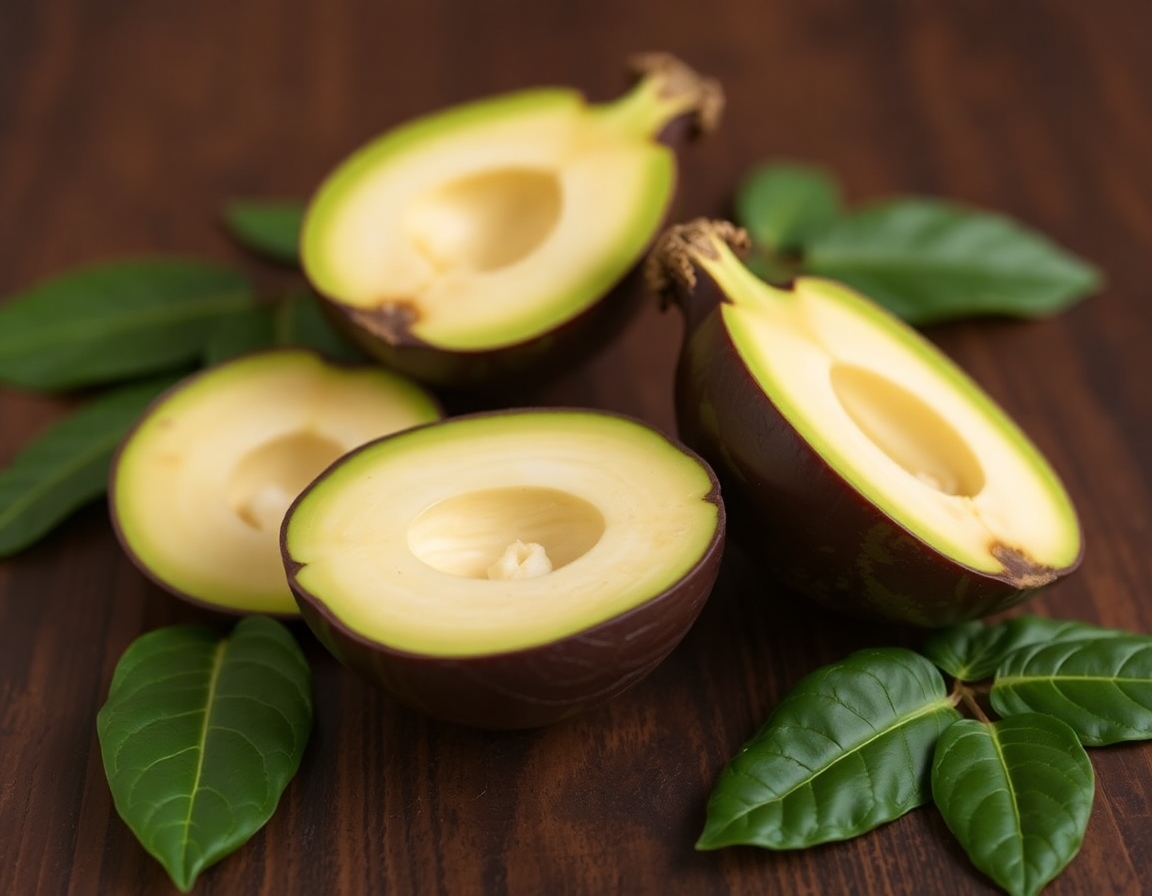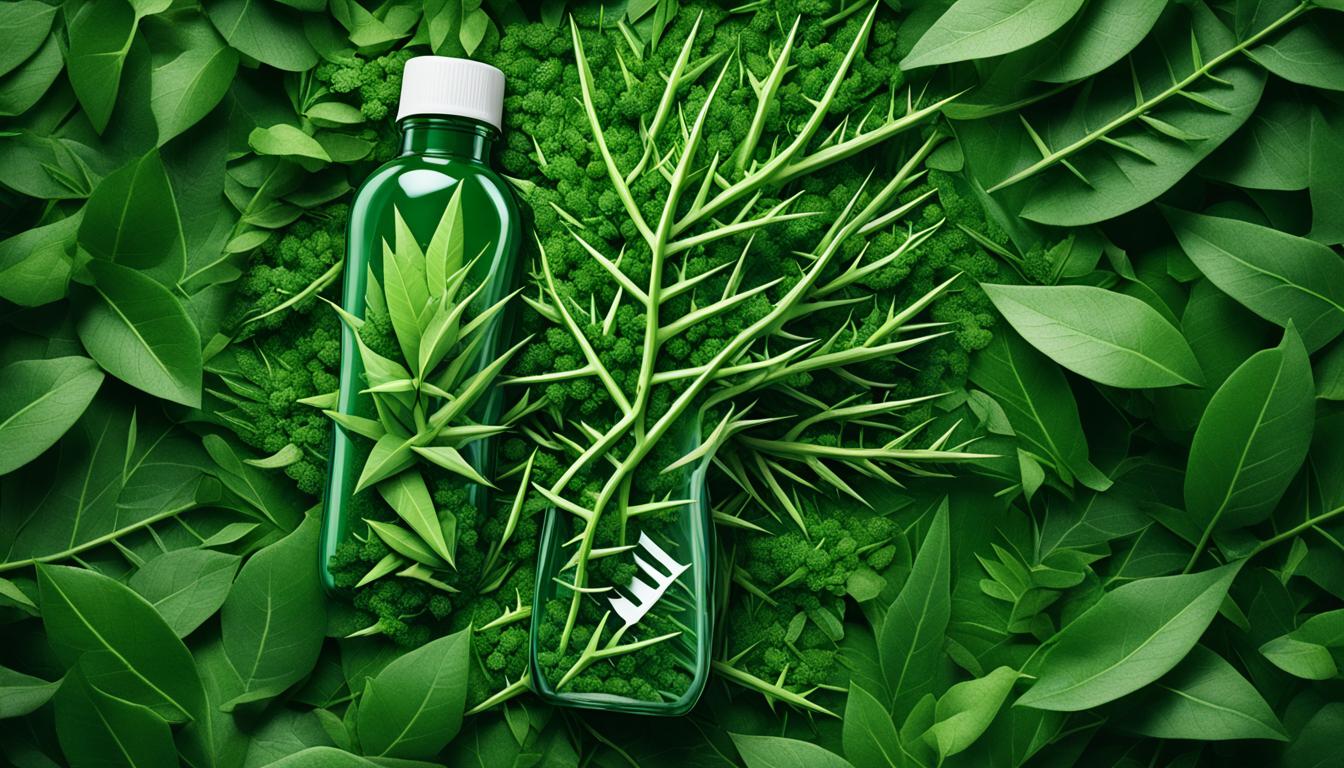Did you know most successful indie beauty brands started with no experience in making cosmetics? This fact shows that making your own natural skincare is possible with the right help. This guide will help you make your own skin care products at home, whether you want to start a business or just care for your skin better.
Creating skin care products mixes creativity with science. It might take some tries to get it right, but making your own products can be very fulfilling. We’ll talk about finding the right ingredients, setting up a home lab, testing your products, and launching your own line.
Key Takeaways
- Successful indie beauty formulators come from diverse career backgrounds
- Most beginner formulators start with little to no prior experience in cosmetic formulation
- There are 12 key tools identified for creating effective skincare products at home
- Indie formulators have the creative freedom to explore unique ingredients and niches
- Understanding the properties and benefits of botanical oils is crucial for natural formulation
Introduction to Skin Care Formulation
Making your own skin care products at home is both rewarding and empowering. It might seem hard at first, but skincare formulation is something anyone can learn. With the right tools and determination, you can make natural skincare recipes, DIY beauty products, or homemade beauty recipes. Just be open-minded and ready to learn.
What’s Required for Formulating Skincare Products
To start with organic skin care formulation, you don’t need a degree or a fancy lab. You just need:
- A passion for making your own cosmetic formulations
- Access to high-quality, skin-friendly ingredients
- A small home setup for your formulation lab
By following best practices and safety guidelines, and using online resources, you can unleash your creativity. You can start making your own unique skincare products. This part will cover the key tools, techniques, and things to consider for successful skincare formulation at home.
“The key to successful skin care formulation is a willingness to learn, explore, and experiment. With the right mindset and resources, anyone can become a skilled DIY beauty alchemist.”
Market Research for Skincare Product Development
Before starting to make your skincare products, it’s key to do deep market research. This helps you see what’s out there, find what’s missing, and make products that people want. By looking into market research for skincare, you can find important info to make your skincare product development successful.
Start by talking to potential customers on social media. Listen to what they say, what they’re unhappy with, and what they like. Keep up with the latest in the natural skincare trends and indie beauty industry by following industry news and influencers. Also, watch how the green beauty market is changing and what customers want.
It’s also important to check out what your competitors are doing. Look at their products, prices, and how they market themselves. See where you can fill in the gaps in the market to make your brand stand out.
“Conducting thorough market research is the foundation for developing successful skincare products that resonate with your target audience.”
Take the time to really get to know what your potential customers need, like, and dislike. This will help you pick the right ingredients, where to place your products, and how to make your skincare product development strategy. By keeping an eye on the market, you can make sure your products really meet what customers are looking for and stand out in the skincare market.
Remember, market research is a continuous process. Always keep an eye on industry trends, what customers say, and what your competitors are doing. This way, you can keep your skincare product development fresh and ready to adapt to the changing natural skincare trends and indie beauty industry.
Define Your Skincare Product Type
Choosing the type of skincare product you want to make is key early on. Will it be a face oil, a moisturizer, a serum, a cleanser, or something else? The type you pick affects the ingredients, how you make it, and the packaging. Think about things like being green, what skin issues you’re tackling, and what’s popular now when picking your product type. Some ingredients and methods work better for certain types of products.
Considerations for Product Type Selection
Knowing what to think about for your chosen product type makes sure your product works well and fits your brand. Here are some important things to keep in mind when picking your product type:
- Targeted Skin Concerns – Different products tackle specific skin problems, like dryness, acne, or aging signs.
- Desired Texture and Finish – The type you choose affects how the product feels and looks, from light and oil-free to thick and creamy.
- Sustainability and Clean Beauty – More people want products made with natural, ethically sourced stuff and green packaging.
- Market Trends and Demand – Keeping up with what’s popular and new can help you find what customers want.
| Skincare Product Type | Key Considerations | Example Ingredients |
|---|---|---|
| Face Oil | Skin type, absorption rate, non-comedogenic | Argan oil, rosehip seed oil, jojoba oil |
| Moisturizer | Skin type, hydration level, occlusive properties | Glycerin, shea butter, hyaluronic acid |
| Serum | Targeted skin concerns, potent actives, fast absorption | Vitamin C, retinol, niacinamide |
| Cleanser | Skin type, cleansing ability, gentle formula | Surfactants, emollients, soothing botanicals |
Think about what makes your desired skincare product special and what it needs. This way, you can make products that really help your customers while staying true to your brand.
Ingredient Selection and Research
Creating great skincare products means picking ingredients carefully. It’s important to know what each ingredient does and how it works with others. Think about how it will work on the skin, if it’s good for the planet, and its cost.
Learn about the INCI system, which is how we name skincare ingredients worldwide. Tools like the Formula Botanica’s Student Library and ULprospector’s ingredient datasheets help a lot with research.
Look into scientific studies on skincare ingredients using Google Scholar and PubMed. These sites have studies on how well and safely ingredients work. Groups like Natrue, Ecocert, and Cosmos give info on organic and natural ingredients.
Don’t just read about ingredients. Try them out in your products and see how they work. Go to trade shows to learn about new ingredients and trends in skincare.
| Ingredient Category | Typical Usage Range |
|---|---|
| Botanical Extracts | 1-10% |
| Cosmetic Actives | 0.1-5% |
| Preservatives | 0.1-1% |
| Surfactants | 5-30% |
Put in the work to research and test ingredients well. This way, you can make skincare products that are unique, work well, and are good for the planet. Let your creativity and knowledge of skincare science come to life.
Setting Up a Home Formulation Lab
You don’t need a fancy, professional lab to make your own skincare products. A clean, quiet spot in your home can be a great DIY beauty lab. Make sure it’s away from where people walk by a lot.
You’ll need things like beakers, spatulas, hot plates, and scales for your lab. It’s important to follow good manufacturing practices (GMP) for cleanliness and safety. Many indie beauty brands began in places like bedrooms or kitchens. The main thing is to have a space that lets you work well and safely.
Top 8 Lab Essentials
- High-Precision Scales: Invest in a scale with 0.01g accuracy for measuring ingredients accurately.
- Personal Protective Equipment (PPE): Wear gloves, safety glasses, and a lab coat to handle ingredients safely.
- Heat-Resistant Beakers: Use glass beakers that can withstand temperatures up to 80°C for heating formulations.
- Water Bath or Bain-Marie: Gently heat ingredients without direct flame exposure to preserve delicate botanicals.
- pH Strips or Meter: Monitor the pH of your water-based products to ensure stability and efficacy.
- Stainless Steel Tools: Spatulas, whisks, and bowls made of stainless steel for easy cleaning and durability.
- Demineralized Water: Use high-quality, purified water for your formulations.
- Electric Cooktop: A two-burner electric cooktop allows you to heat different phases simultaneously.
With these basic supplies, you can start making your own skincare products at home. As your brand gets bigger, you can buy more specialized gear for your lab. Start small, focus on safety, and let your love for natural cosmetics lead the way.
“Everyone can be a formulator by adhering to the KISS principle (keeping formulations and ingredients simple) and beginning on a budget.”
How to Formulate Skin Care Products
Making your own skincare products is a fun and rewarding journey. It’s key to understand the steps of the skincare formulation process. Whether you’re just starting or want to create your own cosmetics, learning how to formulate is crucial.
Start by doing market research to learn what your customers want. This helps you decide what product to make, like a moisturizing cream or a toner.
Then, pick ingredients that fit your brand and the product’s goals. Make sure to mix these ingredients well, following the right steps. Testing your products is important to make sure they work well and are safe for users.
- Research your target market and define the specific product type
- Carefully select high-quality, compatible ingredients
- Follow best practices for weighing, heating, and mixing the formulation
- Test and refine your prototypes to ensure stability, efficacy, and user-friendliness
- Maintain detailed records and adhere to safety guidelines throughout the process
By taking these steps and using your creativity, you can make your own skincare products at home. Remember, making cosmetics is a process that keeps improving. Keep learning and refining your recipes for natural skincare.
“Formulating is considered one of the most enjoyable aspects of being a cosmetic chemist.”
With patience and a focus on quality, you can make your DIY beauty products stand out. This will impress your customers with your unique skincare products.

Understanding Ingredient Percentages
Ingredient percentages are key in skincare product making but can be confusing. Some active ingredients need specific amounts, but the mix of ingredients matters more. Cosmetic chemists balance these ratios for the best results and stability.
As a DIY skincare maker, you don’t have to list ingredient percentages on your labels. Instead, focus on your main ingredients and the overall benefits of your products. Working with a pro can make sure your products have the right amounts of active and functional ingredients.
| Ingredient | Typical Percentage Range |
|---|---|
| Water or Aloe | 70% – 95% |
| Next 4 Ingredients | 3% – 5% |
| Antioxidants (Lipochroman-6, Astaxanthin) | Fraction of a Percentage |
| Vitamin C | Fraction of a Percent to 20% |
| Vitamin A | Varies by Form (Acid, Alcohol, Ester, Liposome) |
| Glycerin | High Percentage (Sticky) to Low Percentage (Suitable for Toners/Essences) |
| Peptides (Matrixyl) | 2% – 3% |
| Niacinamide | 0.5% (Energy Boost) to 4% – 5% (Brightening Effects) |
| Exfoliating Acids (AHA/BHA) | Varies by Percentage and pH |
| Perfumes | Less Than 1% (Potential for Skin Sensitivity) |
| Plant Stem Cells | Varies by Delivery System |
| Preservatives | Few Tenths of a Percent |
To find ingredient percentages, divide the ingredient’s weight by the product’s total weight, then multiply by 100. For instance, in a 50g moisturizer with 10g of oil, the oil makes up 20% ((10g / 50g) x 100).
Active ingredients should be within safe ranges given by suppliers or dermatologists for safety and effectiveness. In emulsions like creams and lotions, balancing water and oil phases is key for texture. Preservatives are vital for stopping germs in water-based products and should be used as the supplier suggests.
“Precision in ingredient percentages is crucial for replicating favorite cosmetics, customizing formulations, and ensuring product safety by avoiding skin irritation.”
Testing and Refining Your Formulations
Testing and refining your skincare products are key steps in making cosmetics. After making your first versions, check how stable they are, how users like them, and if they work well. You might do lab tests, try them out on people, and make changes to get better results. This careful testing and tweaking makes sure your products are safe, work well, and match what you promise.
Importance of Testing and Iteration
Even if you’re making products at home, you can do important tests. Understanding the value of testing and iteration leads to better, more effective natural skincare products. By setting goals, reading up on the topic, and choosing what to test, you can make your products better.
Maybe you want to make a moisturizer smoother, a sunscreen last longer, or a foundation match skin color better. Changing things like the amount of active ingredients, the kind of emulsifiers, or the pH level can make a big difference.
Starting with small batches of 400-500g is a good idea. It lets you test without wasting too much material. When you’re tweaking your products, try changing just a few things at a time to see what works best.
Finally, making sure your products are stable, safe, and liked by users is key before making more. This ensures your products perform well before you start making a lot of them.
“Over the past 15 years, the brand Tresemme has shown remarkable growth in sales, from $50 million a year to over $600 million, emphasizing the impact of launching winning new product concepts in the cosmetic industry.”
Costs and Timelines for Custom Formulations
Creating your own skincare products can be tough if you lack time, resources, or know-how. A good option is to work with a professional lab or contract manufacturer. This can cost between $3,000 to $20,000, depending on the product’s complexity and testing needs.
Creating custom formulations takes about 9 months. This includes 3 months for making the product, 3 months for testing, and 3 months for making it ready for sale. Even though it’s pricier than making it yourself, working with experts ensures your products are safe and work well. This can give you an edge in the market.
For products sold over-the-counter (OTC) or with SPF, making and testing them can start at $25,000. Testing can take from 3 weeks to 12 weeks, depending on the type.
Creating custom cosmetics can take 6 months to a year and a half before you can start making them. The first steps, like talking and getting ready, take about 1-2 weeks. Then, making the product can take 2-6 months, and testing another 2-6 months.
| Process | Timeline | Estimated Cost |
|---|---|---|
| Formulating | 2-6 months | $3,000 – $20,000 |
| Testing | 2-6 months | $3,000 – $20,000 |
| Manufacturing | 2-4 months | Varies |
| Total | 9 months | $3,000 – $20,000+ |
Custom formulating is pricier than private label manufacturing. But, it lets you own and control your product’s formula. This way, you can make unique skincare and cosmetics that stand out in the market.
“Over 60% of the process involves collaboration with the client to ensure clarity and alignment on product development.”
Launching and Selling Your Skincare Products
Now that you’ve perfected your skincare formulas, it’s time to sell them. You need to think about branding, packaging, and following the rules. Also, consider how you’ll sell your products. A strong brand and using social media and online stores can help you reach your customers.
Make sure your products are safe and correctly labeled for where you plan to sell them. With a good launch plan and a focus on quality and customer service, you can make your skincare business successful.
Effective Branding and Packaging
Investing in your brand can make your skincare products stand out. Create a consistent brand voice and look to make your brand recognizable and trustworthy. Choose packaging that shows off your brand’s personality and makes your products unique.
Leveraging Ecommerce and Social Media
Using online stores like Shopify, Wix, or WooCommerce is a cost-effective way to sell your natural skincare. Adding a strong social media presence can also help increase your brand’s visibility and connect with your audience.
Regulatory Compliance and Certifications
Make sure your skincare products are safe and correctly labeled for where you sell them. Getting certifications like cruelty-free or vegan can also attract customers who care about ethics and sustainability.
By carefully launching and selling your skincare products, you can turn your passion into a successful online beauty business. With a good plan for branding, sales, and following the rules, you’re set for success in the skincare industry.
| Skincare Industry Statistics | Insights |
|---|---|
| The global skincare industry is projected to reach $204.61 billion by 2030. | This indicates significant growth potential in the skincare market, making it an attractive industry for new entrepreneurs. |
| Independent brands have been driving much of the recent growth in the skincare industry over traditional brands like Estée Lauder and L’Oréal. | This suggests opportunities for smaller, innovative brands to gain market share and compete with established players. |
| Tarte, a natural beauty line, started with $18,000 and reached $12 million in sales by 2008. | This example demonstrates the potential for small, homegrown skincare brands to achieve rapid growth and success. |

“Investing in branding design can help a skincare company differentiate itself in a competitive market.”
Formulation Resources and Expert Guidance
If you’re new to skincare formulation, there are many resources to help you. Websites like Formula Botanica offer detailed natural cosmetic formulation courses. They also have ingredient databases and advice for indie beauty makers and home formulators.
There are also industry magazines, podcasts, and social media groups full of info and ideas. Meeting with cosmetic chemists through consulting or contract manufacturing can give you great support. This can help as you make and improve your skincare products.
Don’t hesitate to use others’ knowledge to make your skincare formulation dreams come true. With the right indie beauty education and advice, you can handle the complex world of making skincare products. These products can be effective, sustainable, and follow the rules.
| Resource | Description | Pricing |
|---|---|---|
| Formula Botanica | Comprehensive online natural cosmetic formulation training programs, ingredient databases, and expert guidance | Varies by course and membership level |
| Cosmetic Chemistry Tutoring | One-on-one consulting with experienced cosmetic chemists for custom formulation support | Hourly rates or project-based pricing |
| Indie Beauty Tutorials | Online video courses and workshops covering skincare formulation and indie beauty education | Typically $39-$99 per course |
By using these skincare formulation resources, you’ll be on your way to making top-quality, new skincare products. These products will connect with your target audience.
Conclusion
Making your own skincare products at home can be very rewarding. It lets you create products that match your brand and needs. This process takes time, effort, and some money at first. But, it can lead to a successful business and personal satisfaction.
With the right resources and advice, you can learn about making cosmetics. This can help you turn your DIY skincare dreams into reality. The market is growing for natural and custom skincare. By focusing on research, quality, and ethics, you can build a successful business. You’ll also make a positive impact on your customers’ lives.
The journey of making skincare products is always changing. You’ll keep learning, testing, and improving. Keep being curious, persistent, and flexible. This way, you’ll make amazing, personalized skincare products for your customers.
FAQ
What is required for formulating skincare products at home?
To make skincare products at home, you need a special workspace. You’ll also need things like beakers and scales. It’s important to have access to good ingredients and be willing to learn.
Following safety rules and good practices is key.
How do I define the right skincare product type for my brand?
Think about what skin issues you want to solve and what’s popular now. Look at trends and think about being green. Choosing the right product type, like a face oil or moisturizer, matters.
It’s important to know how to make each type of product.
How do I research and select ingredients for my skincare products?
Do your homework on ingredients. Look at their benefits and how they work with skin. Think about if they’re good for the planet and safe to use.
What is the process for formulating skincare products?
Start by researching the market and deciding on your product type. Then pick your ingredients carefully. Mix and package them right.
Testing and trying again is key to making sure your products work well and meet your brand’s promises.
How important are ingredient percentages in skincare formulations?
Ingredient percentages matter, but so does the balance of all ingredients. As someone making products at home, you don’t have to show the exact percentages on your labels.
How can I test and refine my skincare formulations?
Check how stable your products are and what users think. Use lab tests and try them out on people. This helps make your products better and more reliable.
What are the costs and timelines for developing custom skincare formulations?
Creating custom skincare can cost between ,000 and ,000. It usually takes about 20 weeks. The complexity of your products and testing needs can affect the cost and time.
Working with a professional lab can make sure your products are safe and work well.
Where can I find resources and expert guidance for skincare formulation?
There are many online resources, articles, podcasts, and social media groups for indie beauty makers. Talking to experienced cosmetic chemists can also be very helpful.















